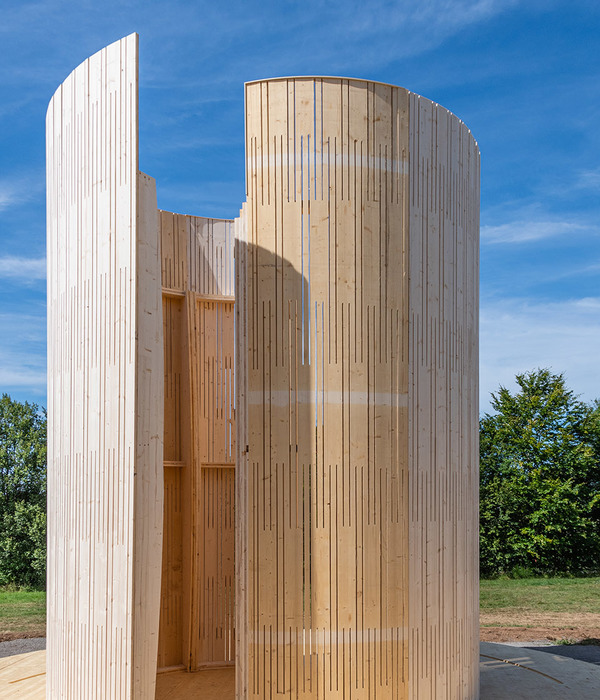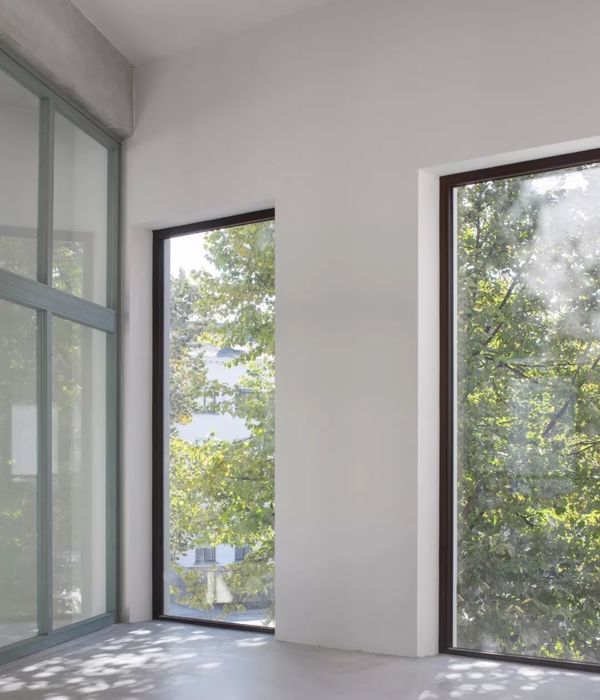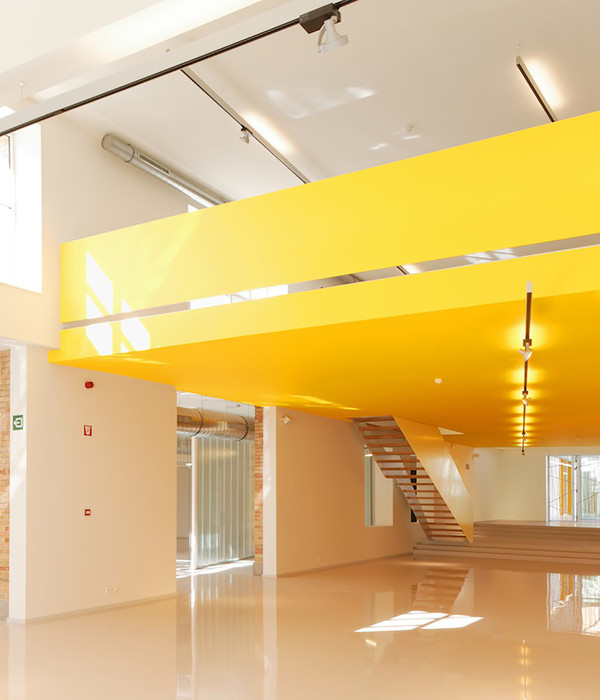Through a bypass channel of 3 m diameter and a flow rate up to 22.000 l/sec. (statistic 20 year flood water) the surface water of the complete city area can be drained off into the river Rhine. At a 5 year Rhine flood level two pumps transport the city surface water into the river Rhine. One of the biggest flood prevention lifting shields worldwide (7,20 m high and 3,70 wide) protects the inner city of Mainz from a statistically 200 years Rhine flood, from a backwater into the local sewer system. With the total height of 8,50 meters, the visible part of the building is just the "tip of the iceberg", the bottom edge of the pit is 16 m under the surface. The orientation of the pumping station is directed to the flow of the river Rhine, its volume expresses the huge amount of water which must be transported into the river in case of emergency.
Company and technical buildings are technical infrastructure of a city and are usually errected with the minimum of attention to design and architecture, largely being considered pragmatic buildings that have to be economical efficient in terms of construction costs. These irrelevant shapes are therefore often the basis for neglect and vandalism which results in continuous renovation costs, such buildings rarely achieve display any architectural quality. With this in mind the client decided to adopt an alternative approach developing the Rhine promenade of the new city quarter "Zollhafen" with the intent of contributing to the urban environment. There is no typology for pumping stations, however it was important to the architects to design a building which displays the workings of a pumping station to its environment.
The window and seamless building, in terms of an "architecture parlante" (C.N. Ledoux 1736- 1806), is a pure and heavy monolith, resting on a vein of water regulating the stream. The surface of the charcoal grey concrete cube with folded sides and eaves edges has a, from stone masons, textured hand hammered finish over its entire surface. Through the 30 mm deep rawness of the surface, nothing reminds on the conventional build-up process. The folded sides produce light and shaded edges and the rawness of the surface increases the interaction of sidelight, full covered illumination and shadows.
{{item.text_origin}}












